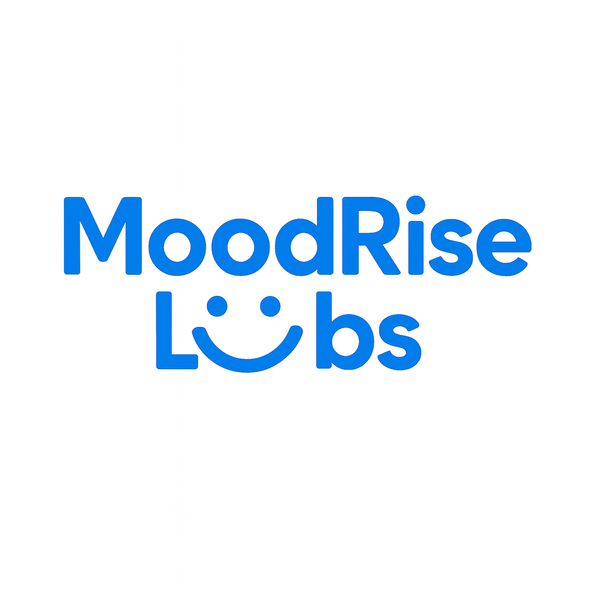PTSD and Brain Chemistry: How Nutrition and Supplements Play a Role
Introduction
Post-Traumatic Stress Disorder (PTSD) is often described as a mental health condition—but at its core, it is also a neurobiological imbalance. The symptoms of PTSD—flashbacks, anxiety, emotional numbness, insomnia—stem not only from psychological trauma but from measurable changes in brain chemistry.
While therapy remains the foundation of treatment, researchers now understand that nutrition and supplements can profoundly influence recovery by repairing neurotransmitter balance, reducing inflammation, and restoring the body’s natural rhythm of calm.
This in-depth article explores how PTSD alters the brain’s chemistry and how specific nutrients and supplements can help the nervous system heal.
Looking for supplements for This? Click here.
🌪️ How PTSD Affects Brain Chemistry

PTSD develops when the brain’s fear and stress circuits become overactive and fail to return to balance after trauma. Three major brain regions are most affected:
The Amygdala – The Fear Center
The amygdala is responsible for detecting threats and triggering the fight-or-flight response. In PTSD, it becomes overactivated, constantly signaling danger—even when there’s no real threat.
The Hippocampus – The Memory Integrator
The hippocampus helps differentiate between past and present experiences. Chronic trauma shrinks hippocampal volume, leading to flashbacks, intrusive memories, and disorientation.
The Prefrontal Cortex – The Regulator
This part of the brain controls logic and impulse regulation. PTSD decreases prefrontal activity, making it difficult to reason with fear or suppress overreactions.
Together, these changes lead to an imbalanced stress system, primarily governed by the hypothalamic-pituitary-adrenal (HPA) axis—the body’s hormone feedback loop for stress management.
⚠️ The Role of Cortisol and the HPA Axis
Under normal conditions, the HPA axis releases cortisol, which rises in response to stress and falls once the danger passes. In PTSD, however, this rhythm breaks down.
Research shows that many people with PTSD have blunted cortisol levels—their stress system has been overused to the point of exhaustion. Others have spikes at inappropriate times, leading to anxiety, sleeplessness, and irritability.
When cortisol becomes dysregulated:
Sleep quality decreases
Inflammation increases
Memory and focus decline
The immune system weakens
Over time, this imbalance affects neurotransmitters like serotonin, dopamine, GABA, and glutamate, which govern mood, motivation, and calmness.
🧬 The Neurochemical Imbalances in PTSD
Trauma doesn’t just change emotions—it rewires the chemical messengers that control them.
Serotonin Deficiency
Serotonin regulates mood, sleep, and impulse control. Chronic stress depletes serotonin production, contributing to depression and anxiety.
Dopamine Dysregulation
Dopamine governs motivation and pleasure. PTSD can cause both low dopamine (emotional numbness) and surges during hyperarousal or flashbacks.
GABA–Glutamate Imbalance
GABA calms the nervous system, while glutamate excites it. Trauma often creates low GABA and high glutamate, resulting in overstimulation, insomnia, and racing thoughts.
Norepinephrine and Adrenaline Overload
These chemicals fuel alertness and fight-or-flight reactions. In PTSD, they remain elevated, making the body feel “on edge” even during rest.
Inflammation and Oxidative Stress
Chronic trauma increases inflammatory cytokines in the brain, impairing neuronal repair and worsening mood regulation.
This biochemical chaos explains why trauma can feel “hardwired” into the body—and why nutritional interventions can help restore balance.
🥦 How Nutrition Supports Brain Recovery
Nutrients are the raw materials of neurotransmitters. The right diet helps rebuild what trauma depletes.
Protein for Neurotransmitters
Amino acids from protein—like tryptophan, tyrosine, and glutamine—are the building blocks for serotonin, dopamine, and GABA.
Good sources: eggs, turkey, beans, nuts, and fish.
Omega-3 Fats for Brain Cell Repair
Omega-3 fatty acids (EPA and DHA) help rebuild damaged neural membranes and reduce inflammation.
Found in fatty fish, flaxseeds, and algae supplements.
Antioxidants for Inflammation Control
Trauma elevates oxidative stress. Antioxidant-rich foods like berries, spinach, turmeric, and green tea counteract free radical damage.
Complex Carbs for Serotonin Regulation
Slow-digesting carbs like oats, quinoa, and sweet potatoes help stabilize blood sugar and support serotonin production.
Minerals for Stress Resilience
Magnesium, zinc, and selenium play key roles in calming the nervous system and supporting hormone balance.
Together, these nutrients form the foundation of biochemical safety, allowing the nervous system to gradually relearn calm.
🌿 Supplements That Support Brain Chemistry in PTSD
While food is foundational, targeted supplements can accelerate recovery by addressing specific neurochemical imbalances.
🧘 Omega-3 Fatty Acids (EPA & DHA)
Role: Neuroprotection and anti-inflammation.
Reduces neuroinflammation caused by chronic stress.
Supports serotonin and dopamine signaling.
Improves mood, focus, and emotional regulation.
Evidence:
Clinical trials show omega-3 supplementation can reduce depression and anxiety symptoms in trauma survivors by modulating brain-derived neurotrophic factor (BDNF)—a protein crucial for neural repair.
Dosage: 1000–2000 mg combined EPA/DHA daily.
🌸 Magnesium
Role: Calms the nervous system and supports GABA function.
Reduces hyperarousal and muscle tension.
Improves sleep and relaxation.
Lowers cortisol and adrenaline spikes.
Forms to use:
Magnesium glycinate (for relaxation)
Magnesium threonate (for cognitive support)
Dosage: 200–400 mg per day.
Studies show magnesium deficiency correlates with increased anxiety and poor emotional control, both common in PTSD.
🌞 Vitamin D
Role: Hormone regulation and mood support.
Enhances serotonin synthesis.
Reduces inflammation and fatigue.
Supports immune and hormonal balance.
Low vitamin D levels are strongly linked with PTSD, depression, and cognitive decline. Supplementation can restore stability in both mind and body.
Dosage: 2000–5000 IU daily (depending on baseline levels).
Looking for supplements for This? Click here.
🌿 Adaptogens (Ashwagandha, Rhodiola, Reishi)
Role: Balance the HPA axis and regulate cortisol.
Ashwagandha:
Lowers cortisol by up to 30%.
Improves sleep and emotional resilience.
Rhodiola Rosea:
Boosts dopamine and serotonin under stress.
Enhances focus and mental stamina.
Reishi Mushroom:
Calms the nervous system and supports immune health.
Helps restore restful sleep and reduce fatigue.
Adaptogens work synergistically to restore balance rather than simply stimulating or sedating.
🧠 B-Complex Vitamins
Role: Rebuilds neurotransmitters and energy metabolism.
B6 aids serotonin and GABA synthesis.
B5 supports adrenal gland recovery.
B12 and Folate promote nerve repair and mood balance.
Trauma depletes B vitamins quickly due to constant stress response activation. Replenishment helps stabilize mood, reduce fatigue, and enhance concentration.
🌺 Zinc and Selenium
Role: Hormonal and immune regulation.
Zinc modulates glutamate and GABA balance, preventing overstimulation.
Selenium reduces oxidative stress in brain tissues.
Both minerals are essential for trauma recovery, as they counter inflammation and improve mental clarity.
Dosage:
Zinc: 15–30 mg daily
Selenium: 100–200 mcg daily
🌬️ L-Theanine and GABA
Role: Promote relaxation without sedation.
L-Theanine (found in green tea) increases alpha brain waves, improving calm focus.
GABA supplements or precursors (like taurine) support the brain’s inhibitory system, counteracting hyperarousal.
These are particularly helpful for trauma-related insomnia and racing thoughts.
💊 N-Acetyl-Cysteine (NAC)
Role: Antioxidant and glutamate regulator.
Increases glutathione, the brain’s master detoxifier.
Reduces inflammation and improves cognitive flexibility.
Helps restore glutamate-GABA balance, reducing anxiety and obsessive thoughts.
NAC has shown promise in treating PTSD-related mood instability and impulsivity in multiple studies.
Dosage: 600–1200 mg twice daily.
🧩 Probiotics and the Gut-Brain Axis
The gut produces 90% of the body’s serotonin. Trauma can disrupt the microbiome, worsening mood and stress tolerance.
Probiotic support:
Improves serotonin production.
Reduces inflammation and anxiety.
Supports healthy digestion and immune resilience.
Look for strains like Lactobacillus rhamnosus and Bifidobacterium longum, both linked to reduced stress and improved mood.
🌙 Amino Acids for Neurotransmitter Repair
Tryptophan or 5-HTP: Boost serotonin levels for calm and optimism.
Tyrosine: Supports dopamine synthesis, improving motivation and energy.
Glycine: A calming amino acid that aids sleep and brain repair.
Using these strategically can help the brain rebuild its chemical foundation for emotional regulation.
Looking for supplements for This? Click here.
🧘 Integrating Nutrition, Supplements, and Therapy

The best trauma recovery plan is multidimensional. Nutrition and supplements should complement—not replace—professional treatment.
Therapy (CBT, EMDR, Somatic Experiencing): Rewires fear pathways and emotional memory.
Looking for online therapy ? Click Here.
Supplements: Support biochemical repair and nervous system resilience.
Lifestyle: Sleep hygiene, breathwork, and gentle movement retrain the body’s sense of safety.
Want to try Breathwork? Click Here.
When all three work together, healing accelerates. Supplements give the brain the nutrients to respond to therapy more effectively.
⚖️ Creating a Daily Routine for Brain Balance
Morning:
B-Complex
Omega-3 (1000 mg EPA/DHA)
Vitamin D (2000 IU)
Ashwagandha (300 mg)
Midday:
Rhodiola (200 mg)
Magnesium (100 mg)
Probiotic supplement
Evening:
Magnesium Glycinate (200–300 mg)
L-Theanine (100 mg)
NAC (600 mg)
Chamomile or Reishi tea
This combination helps maintain calm focus during the day and deep restoration at night.
🌿 Healing Takes Time
It’s important to understand that restoring brain chemistry after trauma isn’t an overnight process. The brain needs time and consistency to rebuild pathways of safety, trust, and emotional balance.
Supplementation, combined with nourishing foods, consistent therapy, and gentle body practices, creates a healing environment where the mind and body can finally cooperate again.
Over weeks and months, symptoms such as anxiety, fatigue, or intrusive thoughts begin to soften. Sleep deepens. Energy returns. The body no longer feels constantly on alert.
🌈 Final Thoughts: Nutrition as Nervous System Medicine
PTSD recovery is about more than coping—it’s about reclaiming regulation. Nutrition and supplements give the body the biochemical stability it needs to support psychological healing.
When inflammation lowers, neurotransmitters balance, and cortisol rhythms normalize, the mind can finally feel safe again.
Healing trauma is a full-body journey. Supplements don’t replace therapy—but they make the journey smoother, calmer, and more sustainable. With time, nourishment, and compassion, the brain learns to trust peace again. 🌿
🧾 References
Yehuda R. et al. “Alterations in cortisol dynamics in PTSD.” Psychoneuroendocrinology, 2015.
Bremner JD. “Traumatic stress: effects on the brain.” Dialogues Clin Neurosci, 2006.
Benton D., Donohoe R. “Omega-3 fatty acids and stress reactivity.” Nutr Res Rev, 2011.
Blom EH. et al. “Magnesium and mood regulation.” Nutrients, 2018.
Lopresti AL., Drummond PD. “Ashwagandha for stress and anxiety.” J Evid Based Complementary Altern Med, 2017.
Raison CL., Miller AH. “Inflammation and stress-related disorders.” Am J Psychiatry, 2013.
Panossian A., Wikman G. “Adaptogens and their stress-protective activity.” Pharmaceuticals, 2010.
van der Kolk, Bessel A. The Body Keeps the Score. Viking, 2014.
Hellhammer DH. et al. “Phosphatidylserine and cortisol response to stress.” Stress, 2004.
National Center for PTSD, U.S. Department of Veterans Affairs. “Understanding PTSD and Recovery,” 2022.
Related Posts
-
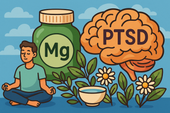
Magnesium and PTSD: Calming the Nervous System
Magnesium is one of the body’s most powerful natural stress relievers. 🌿 Learn how this essential mineral helps calm the nervous system, lower cortisol, ease anxiety, and support better sleep—making it a key ally for anyone recovering from trauma or PTSD.
-
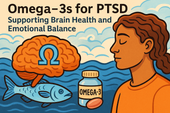
Omega-3s for PTSD: Supporting Brain Health and Emotional Balance
Omega-3s play a vital role in calming the brain and restoring balance after trauma. 🌊 Discover how these essential fatty acids support PTSD recovery by reducing inflammation, balancing neurotransmitters, improving sleep, and promoting emotional resilience—helping your brain heal from the inside out.
-

Ashwagandha and PTSD: Reducing Stress and Anxiety Naturally
Ashwagandha offers a natural path to stress and trauma recovery by calming the body’s stress response and restoring hormonal balance. 🌿 Learn how this powerful adaptogen can lower cortisol, ease anxiety, improve sleep, and support emotional resilience for those healing from PTSD.
-
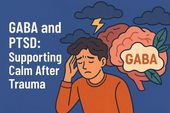
GABA and PTSD: Supporting Calm After Trauma
Therapy helps the brain rewire after trauma, restoring safety and self-trust. 🛋️ Discover how modern therapeutic approaches—like EMDR, CBT, and somatic therapy—help regulate the nervous system, calm intrusive memories, and rebuild emotional resilience for people recovering from PTSD and chronic stress.
-

Can Supplements Support Trauma Recovery? Evidence & Insights
Can nutrients like Vitamin D and Zinc really support trauma recovery? 🌞 These two essential micronutrients play powerful roles in immune balance, inflammation control, and hormonal stability—all key systems disrupted by chronic stress and trauma. Learn how replenishing them can help restore strength and emotional resilience.
-
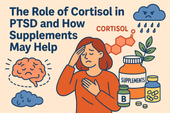
The Role of Cortisol in PTSD and How Supplements May Help
Your adrenal glands play a vital role in how your body responds to stress—but when they’re overworked, fatigue and anxiety can follow. 🌿 Learn how to support adrenal health naturally with nutrients, adaptogens like ashwagandha and rhodiola, and lifestyle habits that restore hormonal balance and steady energy.
-
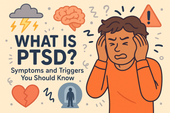
What Is PTSD? Symptoms and Triggers You Should Know
Post-Traumatic Stress Disorder (PTSD) can affect anyone who has experienced deep emotional or physical trauma. 🌪️ Learn how PTSD develops, what symptoms to look for, and the triggers that reignite distress—plus how understanding your body’s response to trauma is the first step toward healing and recovery.
-
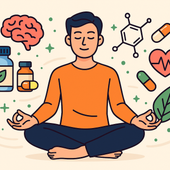
Creating a Daily Supplement Stack for Stress and Cortisol Management: A Science-Based Guide
Building a daily supplement stack for stress and cortisol management can help restore balance, focus, and calm in your life. 🌿 Learn how adaptogens, magnesium, omega-3s, and other key nutrients support your body’s natural stress response from morning to night—so you can feel grounded, energized, and resilient every day.
-
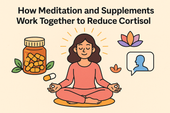
How Meditation and Supplements Work Together to Reduce Cortisol: A Complete Guide to Calming the Mind and Body
Meditation and supplements can work hand in hand to naturally reduce cortisol, your body’s main stress hormone. 🌿 Learn how mindfulness practices, adaptogenic herbs, and nutrient support like magnesium, omega-3s, and B vitamins create a powerful synergy for calm, focus, and emotional balance—backed by science and daily rituals that truly reset your stress response.
-
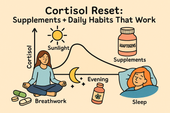
Cortisol Reset: Supplements + Daily Habits That Work
-
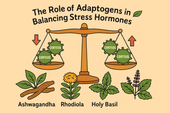
The Role of Adaptogens in Balancing Stress Hormones
Adaptogens work at the root of stress — your nervous system. 🌿 Learn how these powerful herbs help regulate cortisol, calm your nerves, and restore balance between energy and relaxation. ✨
-

Cortisol and Caffeine: How Much Is Too Much?
Caffeine can boost energy and focus — but too much can overstimulate your stress hormones. ☕ Learn how caffeine affects cortisol, energy levels, and mood, and discover how to find the perfect balance for lasting calm and clarity. 🌿
-
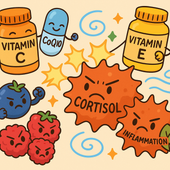
Antioxidants for Stress Management and Cortisol Control
When stress overwhelms your body, antioxidants come to the rescue. 🌿 Learn how vitamin C, CoQ10, and other natural compounds help reduce oxidative stress, regulate cortisol, and restore calm energy from within. ✨
-
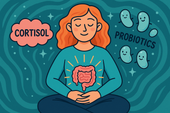
Cortisol and Gut Health: How Probiotics May Help
Chronic stress doesn’t just affect your mind — it changes your gut. 🌿 Learn how cortisol disrupts the microbiome and how probiotics can help restore balance, improve digestion, and calm your stress response naturally. ✨
-

Vitamin D and Cortisol: Supporting Immune Balance
Vitamin D does more than strengthen bones — it helps regulate cortisol and support immune balance. 🌞 Learn how this essential hormone-like nutrient restores calm, improves mood, and strengthens your body’s natural stress defenses. 🌿
-
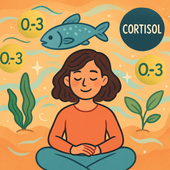
Omega-3s and Cortisol: Fighting Inflammation Naturally
Omega-3s are more than heart-healthy fats — they’re natural cortisol regulators. 🌿 Learn how EPA and DHA help reduce chronic inflammation, calm the nervous system, and support stress recovery from the inside out. ✨
-
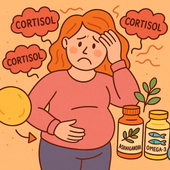
High Cortisol and Belly Fat: Can Supplements Help?
Chronic stress can make belly fat harder to lose — but supplements like ashwagandha, magnesium, and omega-3s may help restore cortisol balance. 🌿 Learn how science-backed nutrients support fat metabolism, calm your stress response, and bring your body back into harmony. ✨
-
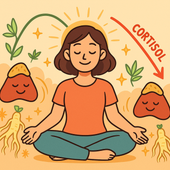
How Ginseng Can Support Energy and Cortisol Balance
Ginseng is one of nature’s most powerful adaptogens, helping your body handle stress without burning out. 🌿 Learn how this ancient root supports balanced cortisol, steady energy, and sharper focus — restoring vitality naturally and sustainably. ✨
-
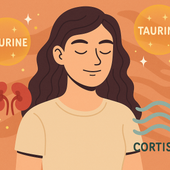
Taurine and Cortisol: Supporting Focus Under Stress
When cortisol surges, focus fades — but taurine helps restore balance. 🌿 Learn how this powerful amino acid calms your nervous system, regulates stress hormones, and sharpens concentration without jitters or fatigue. ✨
-
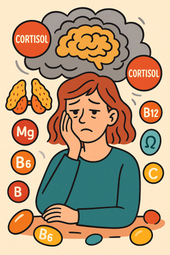
The Link Between Cortisol, Brain Fog, and Nutrient Deficiencies
When brain fog sets in, it’s not just in your head — it’s in your hormones. 🌿 Discover how cortisol imbalance and nutrient deficiencies like low magnesium, B vitamins, and omega-3s can cloud your focus and how restoring balance brings back mental clarity and calm. ✨
-
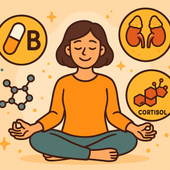
B Vitamins for Stress, Energy, and Cortisol Regulation
B vitamins are the foundation of stress resilience and steady energy. 🌿 Learn how this essential group of nutrients helps regulate cortisol, restore focus, and keep your nervous system calm — giving you balance from the inside out. ✨
-
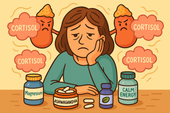
Cortisol Imbalance and Chronic Fatigue: Can Supplements Help?
When chronic stress keeps cortisol high, fatigue and brain fog follow. 🌿 Learn how to rebalance your stress hormones naturally with calming nutrients, adaptogens, and lifestyle rituals that restore energy, focus, and inner peace. ✨
-
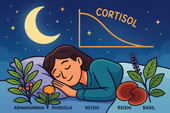
Adaptogen Stacks for Better Sleep and Lower Stress Hormones
Adaptogens can help your body recover from stress and sleep better by regulating key hormones like cortisol and adrenaline. 🌿 Learn how adaptogen stacks work to restore balance, calm the mind, and rebuild resilience — so you can rest deeply and wake renewed. ✨
-
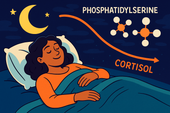
Phosphatidylserine for Nighttime Cortisol Control
When stress hormones stay high at night, deep rest becomes impossible. 🌙 Discover how phosphatidylserine helps calm the brain, reduce nighttime cortisol, and restore healthy sleep rhythms — so you can wake up peaceful, clear, and recharged. ✨
-
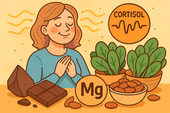
Magnesium for Stress Relief and Cortisol Reduction
Magnesium is one of the most powerful natural tools for stress relief. 🌿 This essential mineral calms your nervous system, lowers cortisol, and helps your body recover from chronic tension. Learn how magnesium replenishes balance, improves sleep, and restores inner peace — naturally. ✨
-
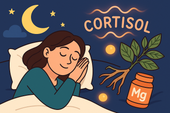
Supplements to Improve Sleep by Balancing Cortisol
When cortisol stays high at night, sleep becomes a struggle. 🌙 Discover natural supplements that calm the nervous system, lower stress hormones, and restore your body’s natural rhythm. From magnesium and ashwagandha to L-theanine and phosphatidylserine, learn how to build deeper, more restorative rest. 🌿
-
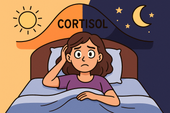
Cortisol and Sleep: Why Stress Keeps You Awake
When stress keeps your body in fight-or-flight mode, cortisol refuses to calm down — and sleep becomes impossible. 🌙 Learn how elevated cortisol disrupts your circadian rhythm, suppresses melatonin, and turns restless nights into exhaustion. Discover how to restore balance and reclaim deep rest. ✨
-
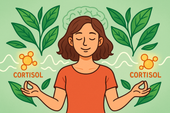
L-Theanine for Cortisol Balance and Anxiety Relief
L-Theanine — the calming amino acid from green tea — helps quiet the mind and balance cortisol, the body’s key stress hormone. 🌿 Learn how it promotes calm focus, eases anxiety, and supports deep rest without sedation, backed by modern research and centuries of tradition. ✨
-
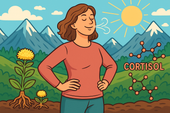
Rhodiola Rosea and Stress Resilience: A Natural Cortisol Regulator
Rhodiola rosea is one of nature’s most powerful tools for resilience. 🌿 This Arctic root helps balance cortisol, fight fatigue, and sharpen focus — keeping you calm yet energized even under stress. Discover the science behind Rhodiola’s adaptogenic power and how it helps your body thrive under pressure. ✨
-
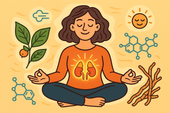
Ashwagandha for Cortisol Balance: What the Science Says
Ashwagandha helps your body recover from chronic stress by calming the adrenal system and balancing cortisol — your key stress hormone. 🌿 Learn what science says about this powerful adaptogen, how it restores energy and focus, and why it’s one of nature’s most effective tools for modern stress relief. ✨
-

Supplements That Naturally Lower Cortisol Levels
When cortisol levels calm, your energy transforms — no more crashes or jitters, just steady focus and inner peace. 🌿 Learn which natural supplements and habits lower stress hormones, boost calm energy, and help your body thrive with balance instead of burnout. ✨
-
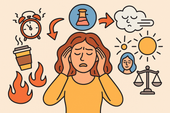
What Is Cortisol Imbalance? Symptoms You Shouldn’t Ignore
Cortisol — your body’s main stress hormone — keeps you alert and energized, but when it’s out of balance, it can drain your health. 🌿 Learn the signs of cortisol imbalance, from fatigue and anxiety to sleep disruption and stubborn weight gain, and discover how to restore calm, energy, and hormonal harmony naturally. ✨
-

The Best Daily Multivitamins for Menopausal Women
Menopause brings new nutritional needs that your old vitamin routine may no longer meet. 🌿 Discover how the right daily multivitamin can boost energy, balance mood, support bone and heart health, and keep your skin glowing. Learn which nutrients truly matter — from vitamin D to magnesium and B12 — to feel strong and vibrant every day. ✨
-
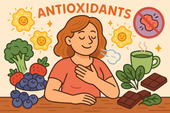
Antioxidants and Menopause: Fighting Inflammation Naturally
During menopause, oxidative stress and inflammation can quietly accelerate aging, fatigue, and skin changes. 🌿 Learn how antioxidants — from vitamins C and E to polyphenols in berries and green tea — help neutralize free radicals, reduce inflammation, and restore balance naturally. Discover the science of radiant, resilient aging. ✨
-
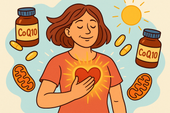
How CoQ10 Supports Heart Health After Menopause
After menopause, heart health becomes more important than ever. ❤️ Discover how CoQ10 — your body’s natural energy molecule — supports cardiovascular strength, restores vitality, and protects against oxidative stress. Learn how this essential nutrient helps keep your heart energized, balanced, and resilient through every stage of life. 🌿
-

Collagen Supplements for Skin and Joint Health Post-Menopause
After menopause, collagen loss affects both skin elasticity and joint comfort — but supplements can help rebuild from within. 🌸 Learn how collagen peptides, vitamin C, and other nutrients work together to restore firmness, reduce stiffness, and keep you glowing and mobile well into your next chapter. ✨
-
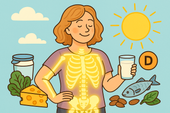
Calcium and Vitamin D: Protecting Bone Health in Menopause
Menopause brings hormonal changes that can weaken bones—but with the right nutrients, strength and stability can be rebuilt. 🦴 Learn how calcium and vitamin D work together to protect bone density, prevent fractures, and keep your body resilient. This guide explores nutrition, sunlight, and lifestyle habits that help your bones stay strong and vibrant for years to come. ☀️💪
-

Adaptogens for Energy and Resilience During Menopause
Feeling drained or emotionally scattered during menopause? 🌿 Discover how adaptogenic herbs like Ashwagandha, Rhodiola, and Ginseng can restore energy, balance cortisol, and build emotional resilience. Learn how these natural allies work with your body—not against it—to help you stay strong, focused, and calm through life’s hormonal changes. 🌸
-
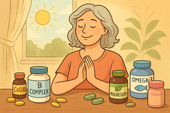
Supplements That Help Beat Menopause Fatigue
Menopause fatigue can feel like more than tiredness—it’s a total energy crash. This guide explores how specific supplements, mindful breathwork, and therapy can help restore balance. Learn how nutrients like B vitamins, magnesium, and adaptogens rebuild your stamina, while breathwork and emotional healing calm your nervous system and bring vitality back to your days. 🌿✨
-

Herbal Blends for Menopausal Restlessness: Finding Calm in Transition
Herbal blends bring the wisdom of nature into moments of rest and renewal. Discover how soothing herbs like chamomile, lemon balm, and ashwagandha work together to calm menopausal restlessness, balance hormones, and invite deep relaxation. 🌿💫
-
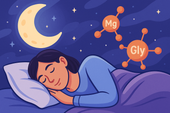
Magnesium + Glycine for Deep Sleep During Menopause
Nutrients like magnesium, glycine, and B vitamins form the foundation for deep, restorative sleep during menopause. Discover how these natural compounds calm your nervous system, balance hormones, and help you wake up refreshed and recharged. 🌿💤
-
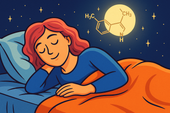
Melatonin and Menopause: Restoring Your Sleep Cycle
Nutrients are the foundation of hormone balance and energy. Learn how vitamins, minerals, and whole foods like greens, salmon, and berries nourish women’s bodies during menopause and beyond — restoring vitality, mood, and strength. 🌿🥗
-
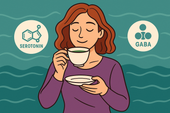
How L-Theanine Helps With Menopausal Anxiety
Science continually deepens our understanding of the human body, from hormones to neurotransmitters. Discover how evidence-based research shapes modern wellness — bridging natural medicine, neuroscience, and hormone balance for healthier living. 🔬🌿
-

Can Ginkgo Biloba Improve Memory in Menopausal Women?
Hormone therapy can be a powerful tool for easing menopause symptoms and restoring balance. Learn how it works, the types available, and how to combine it safely with lifestyle and natural support for optimal well-being. 🌸💊
-
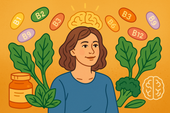
B Vitamins for Mental Clarity During Menopause
Nutrients are the foundation of mental and physical balance during menopause. Discover how vitamins, minerals, and whole foods like leafy greens, fish, nuts, and citrus can fuel energy, clarity, and calm while supporting hormonal health. 🌿✨
-
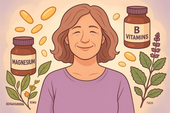
Mood Swings and Menopause: Natural Nutrient Support
Probiotics do more than support digestion — they help balance mood, hormones, and immunity too. Learn how a healthy gut microbiome can ease menopause symptoms, boost energy, and improve emotional resilience naturally. 🌿🦠
-
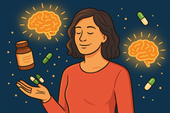
Brain Fog in Menopause: Supplements That May Help
Supplements can be powerful allies in restoring balance, energy, and focus—especially during menopause. Learn how nutrients like omega-3s, vitamin D, magnesium, and herbal adaptogens work together to support brain health, reduce stress, and promote lasting vitality. 🌿💊
-

Adaptogen Stacks for Reducing Night Sweats
Hormone detox isn’t about cleansing your body—it’s about restoring flow. Learn how the liver, gut, and endocrine systems work together to eliminate hormone buildup and how herbs like milk thistle, dandelion, and schisandra support balance, clarity, and natural vitality. 🌿💫
-
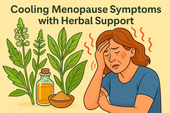
Cooling Menopause Symptoms with Herbal Support
Ashwagandha is one of nature’s most powerful adaptogens, helping women manage stress, sleep better, and balance hormones naturally. Discover how this ancient root supports calm energy, emotional resilience, and relief from menopause-related anxiety and fatigue. 🌿💫
